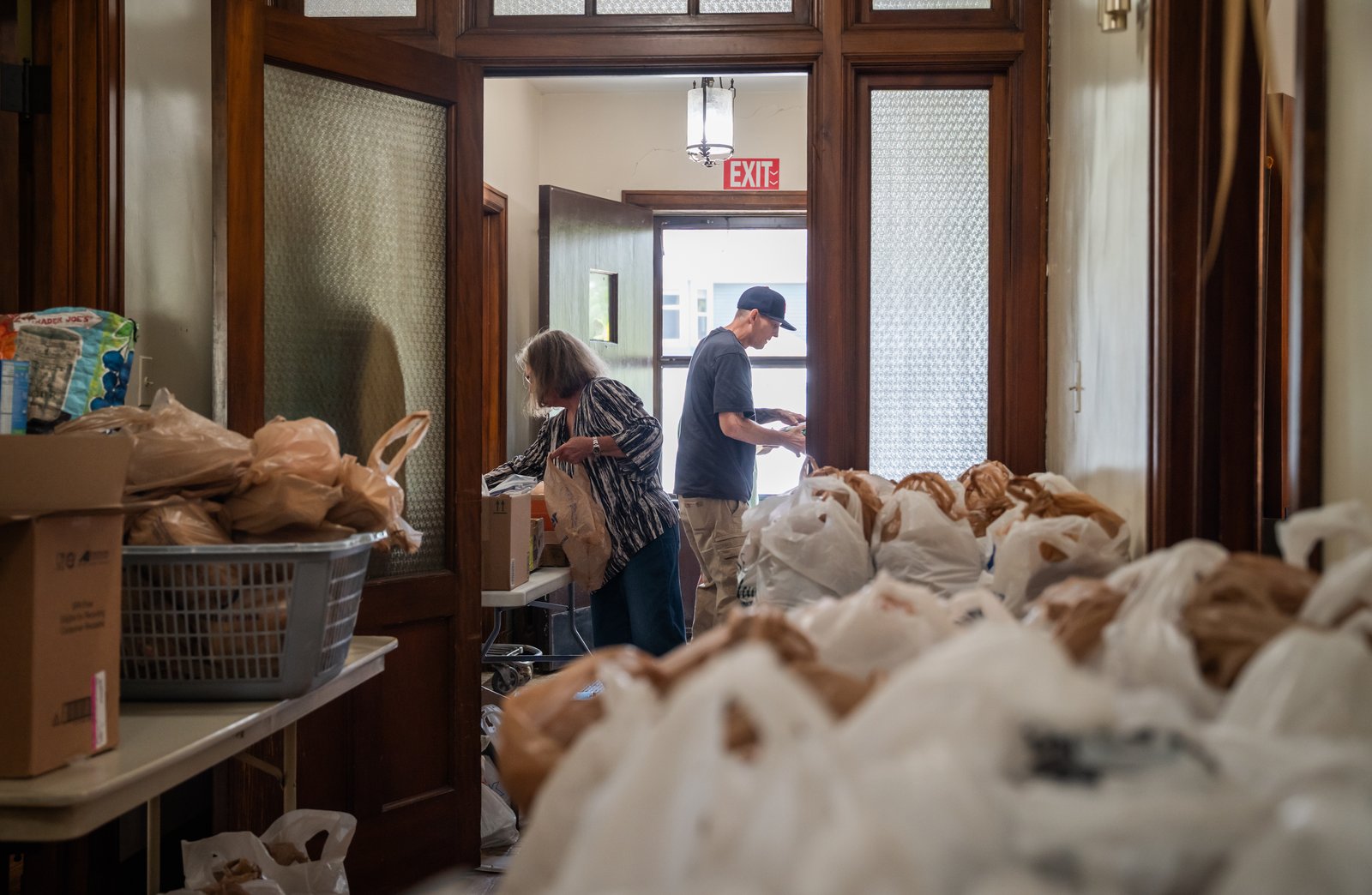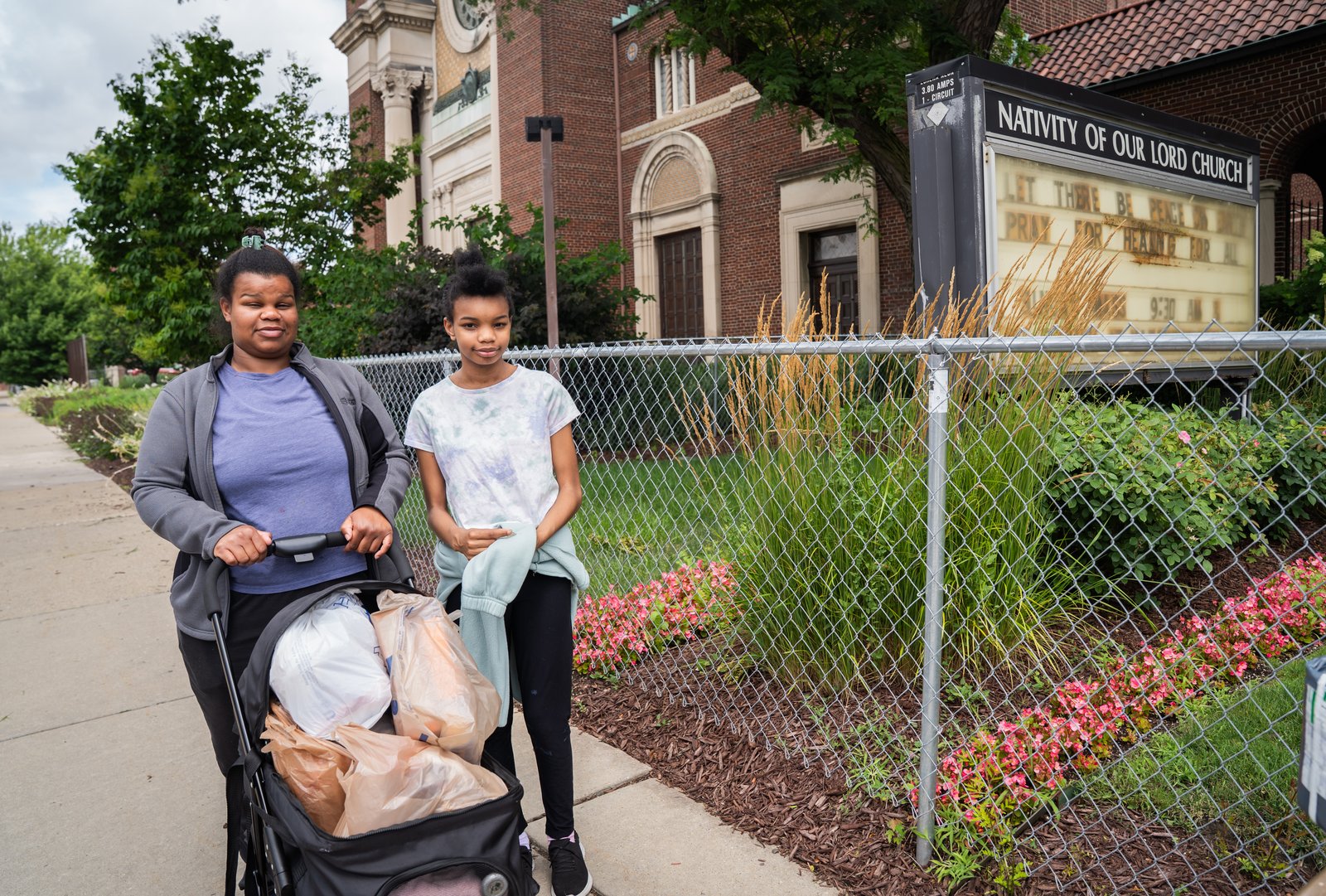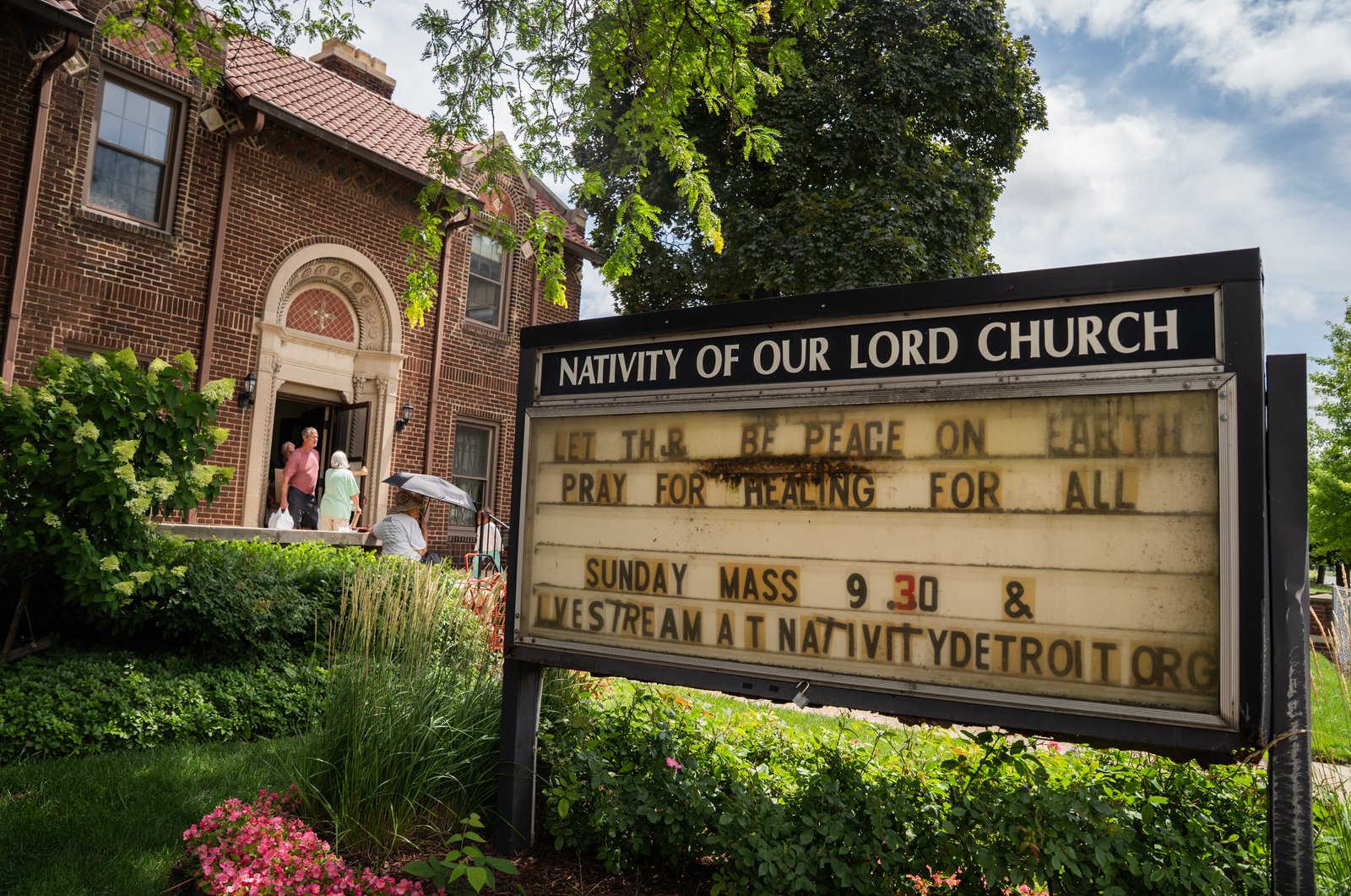Nativity of Our Lord Parish in Detroit reports its Gleaners bill has nearly tripled as demand increases
DETROIT ─ Cuts in federal funding to food banks have produced a knock-on effect for parish pantries, which have seen increases in their food bank bills at a time when everybody is dealing with higher food prices.
The United States Department of Agriculture canceled $4.3 million worth of food shipments to Michigan food banks earlier this year, prompting budget shortfalls.
The cuts mean less USDA-subsidized food is on book bank shelves, prompting parish food pantries to select non-subsidized food items at a higher cost.
Anne Crowe, parish secretary and outreach coordinator at Nativity of Our Lord Parish on Detroit’s east side, wrote in the July parish bulletin that the parish bill from Gleaners Community Food Bank has increased from $1,000 a month to $3,000 a month.
“Gleaners has USDA food and non-USDA food on the shelves that you can select, and the USDA food is priced much lower than what Gleaners calls ‘shared maintenance,’” Crowe told Detroit Catholic. “Gleaners' prices are still below grocery store prices, even if they’re not USDA, and Gleaners is a fantastic food bank. But they have an operation to run; there is only so much they can do. So, when their costs go up, our costs go up.”
Nativity Parish operates its food pantry every Thursday from 1 p.m. to 4 p.m. Just before 1 p.m., people start lining up in front of the church located on the corner of McClellan and Gratiot to receive their allotted food, depending on family size.

Since the USDA announced in March the cancellation of the Emergency Food Assistance Program, which supplied USDA-subsidized shipments to food banks, including items such as chicken, eggs and cheese, Crowe said the costs of such items quadrupled.
“For example, frozen chicken is often one of the three meats we pack for our families,” Crowe said. “On average, we need 160 pounds a week. When I can purchase under USDA, a 40-pound case of chicken is $7.20. A total cost of $28.80 for the week. When it’s not USDA, it is $30.82 per case, a total cost of $123.82. Four cases of USDA chicken are less than one case of regular Gleaner’s price, which is still better than grocery store prices.”
Kristen Sokul, senior director of advancement communications, marketing and media public relations for Gleaners Community Food Bank, said they were informed earlier in the year that there would be cuts.
“Our team knew that there would be some reductions in food available to us through the USDA programs, even as we were figuring out our fiscal year budget,” Sokul said. “Our fiscal year runs from Oct. 1 to Sept. 30, and we built some of these reductions into our budget. We then learned earlier this calendar year that more food wasn’t going to be available. So, some of these reductions have been predicted, some of it unpredicted.”
Gleaners distributed 53 million pounds of food to pantries and soup kitchens across the area last year. USDA food makes up 27% of that total, and the reduction in USDA-subsidized food through cutting the Emergency Food Assistance Program amounts to 5 million pounds of food over the fiscal year.
The reduction in USDA-purchased food created an $850,000 gap in Gleaners' yearly budget, which the organization had to make up through more fundraising opportunities, reaching out to partners such as grocery store chains to replace the USDA-subsidized food and reducing operational expenses.

Gleaners also worked with its partners to purchase particular items throughout the calendar year and make them available at a reduced price, helping pantries stay on budget, said Julie Beamer, chief operating officer at Gleaners Community Food Bank.
“One of the things we did at the parish level was reinstituting a program we had done several years ago called the Holiday Special Program," Beamer said. "In this program, we purchased a range of nutritious food staples and made them available for our partner network at a cost far below what it cost to purchase the food. This helps pantries stretch their budget, given that we weren’t seeing as much donated food available.”
Gleaners has distributed 700,000 pounds of food purchased at low cost or for free to its network. The program runs through September as Gleaners has dipped into its reserves to fund the effort.
All of these cuts and readjustments to budgets at community food banks and food panties are happening at a time when more people are in need, Crowe said.
“On the ground, we are seeing more and more families coming for assistance,” Crowe said. "We service the 48213 ZIP Code, but if somebody is out of our ZIP Code, I will take care of them that day and refer them to someplace in their own area for the next time. But we’re also open to members of the Detroit Lower Eastside Family of Parishes; so St. Elizabeth, Sacred Heart, St. Charles Borromeo, St. Augustine and St Monica, those families are also welcome at our pantry as well.”
Nativity’s food pantry serves an average of 200 to 300 families a month, with a rule that a family may only visit the pantry once a month. Since January, the pantry has served 1,332 families, amounting to 2,689 individuals.
When a family drives up to the pantry (the pantry implemented a drive-thru system during the peak of the COVID pandemic and kept it), they are given a set amount of food based on the size of a family.

A family of four receives four cans of vegetables, two boxes of macaroni and cheese, four cans of soup, two cans of tuna, two cans of fruit, four cans of beans, a package of spaghetti noodles along with a jar of sauce, bread, peanut butter, and Crowe adds when “we’re really lucky,” jelly.
“Our pantry is designed to provide a three-, maybe four-day supply of food with the hope it will get the family through the month to when their Bridge card reactivates or whenever their next paycheck is,” Crowe said.
To help cover the parish’s rising Gleaners bill, Crowe has asked parishioners and supporters of the food pantry to consider donating directly to the pantry to cover some of the shortfalls or to make out checks to Gleaners with “Nativity of Our Lord Parish, 5900 McClellan, Detroit, Michigan 48213,” in the memo line.
“When Gleaners receives that check, it will go directly in our account to help keep costs down on our monthly bill,” Crowe said. "Any donation is greatly appreciated.”
Crowe adds that the families who come to Nativity Parish for food distribution are more than clients; they have become family.
“Our families work hard and do the best they can, and they just need a little bit of help,” Crowe said. “They’re not clients, they’re my family. Their kids bring me report cards to show me how they are doing in school. We ask them about their jobs and how they are doing. And all of this is volunteer-run; if it weren’t for volunteers, this program wouldn’t be happening.”

Meanwhile, Gleaners said it is incumbent on them and food banks across the country to find new ways to create savings to make the food on their shelves as accessible as possible, as pantries across the country navigate the cuts.
“It’s incumbent on us to focus on our fundraising and focus on getting more effective, more effective in right-sizing all of the distributions we are sending out to the parish in terms of the right amount of product, the right amount of milk and items,” Beamer said.
Sokul adds Gleaners will remain committed to its partners – including making available 860,000 gallons of fresh milk free of charge along with one-third of the 53 million pounds of food it distributed last year being fresh produce – and they will stand by their partners through the ups and downs in federal funding.
“It’s important to understand the context of this that USDA-provided food has had waxes and wanes for years,” Sokul said. “Food banks are used to being nimble to act and respond responsibly with the resources entrusted to us. So even as resources may go up and down, we are always looking at ways to continue to serve our community with what’s available to us in effective and efficient ways.”











